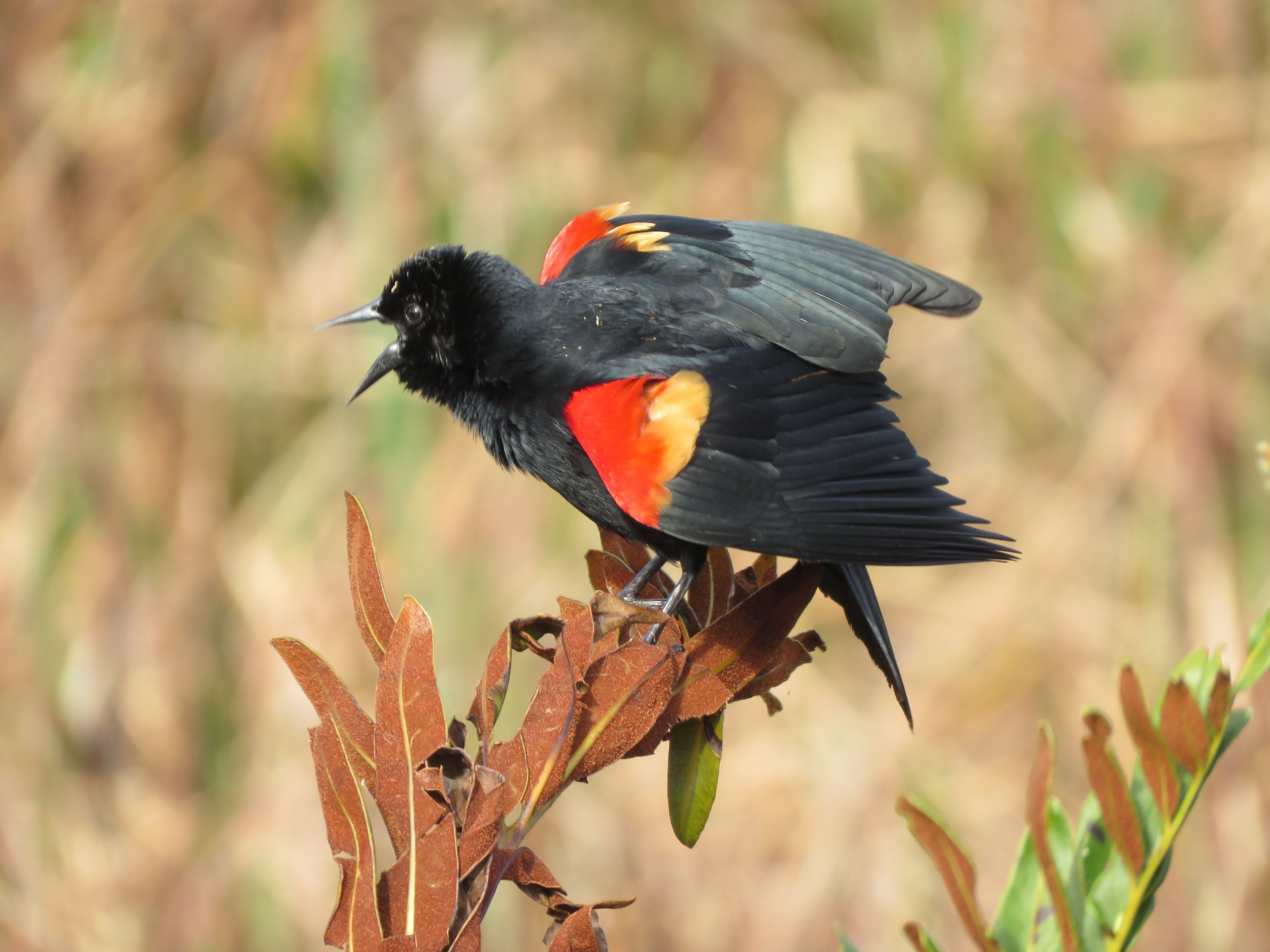
How do we mark the beginning of spring? There’s the vernal equinox on March 20th, of course, but in practice it depends whom you ask. An elementary school student might reference the first day the class gets to go outside for recess. Similarly, the start of spring for birds might have more to do with the weather and their preferred activities than the spring equinox. For Red-winged Blackbirds, spring begins in early March or even late February. Unbothered by the cold, male blackbirds want to get north as soon as they’ve put on enough weight to survive the trip. An early arrival time lets them stake a claim to a breeding territory, hotly contested by neighboring blackbirds. Females follow the males north a couple of weeks later. Upon arrival, they’ll feed on seeds left over from fall until insects emerge.
For strict insectivores like swallows, the spring equinox is often too early for good eating in our area. Many swallows arrive during April’s thaws: Bank Swallows, Barn Swallows, Cliff Swallows, Purple Martins, and Northern Rough-winged Swallows.
One early-bird exception is the Tree Swallow, which will eat leftover winter fruits in March before insects take to the air.
Ask a Bald Eagle and you’ll get an angler’s meandering thoughts about the weather and fish. In the fall, Bald Eagles move south as northern water bodies freeze. Early the following year, the opposite happens sometime between January and March. Basically, if weather allows and they can find fish to eat, eagles will start drifting north.
The biggest movements of raptors occur when favorable winds from the south help propel them onward, which often happens in April. Search the skies for migratory raptors over the Missouri River in spring and you might get to see less-common species, such as Rough-legged Hawk, Swainson’s Hawk, Broad-winged Hawk, and familiar species in surprising numbers.
When talking about spring migration, it’s good to consider how climate change can make things more challenging for hard-working birds. As any traveler knows, timing is everything — and earlier growing seasons are making it harder for birds to time things right. Songbirds that set off for the breeding grounds when the days reach a certain length may find that the trees have already leafed out a week or two early due to excessive warmth and that they’ve missed the best time to find caterpillars on new leaves to eat, making it significantly harder to find food to fuel their migration.
One way we can help migrating birds is to make sure our urban habitats provide food and shelter for worn-out birds. Avoiding pesticides and gardening with native plants ensures that songbirds can find food sources to power their trips northward. Another way is to dim the lights during big migration nights to avoid disorienting birds and causing them to collide with buildings. Check Birdcast.info for the latest migration forecast.
Early spring is also the perfect time to think about creating habitat for the summer breeding season. Consider planting native trees and shrubs that can act as keystones for your backyard habitats, offering year-round protection and nourishment for birds.
Highlights of March-April Birds
Waterbirds
Blue-winged Teal
Green-winged Teal
Northern Shoveler
Gadwall
Lesser Scaup
Horned Grebe
Common Loon
Shorebirds and Waders
American Woodcock
Wilson’s Snipe
Lesser Yellowlegs
Greater Yellowlegs
Baird’s Sandpiper
Pectoral Sandpiper
Great Egret
Seabirds
Franklin’s Gull
Forster’s Tern
American White Pelican
Raptors
Turkey Vulture (No, really!)
Osprey
Bald Eagle
Rough-legged Hawk
Broad-winged Hawk
Swainson’s Hawk
Landbirds
Yellow-bellied Sapsucker
Eastern Phoebe
Ruby-crowned Kinglet
Golden-crowned Kinglet
All of our swallows (Tree Swallow, Bank Swallow, Purple Martin, Northern Rough-winged Swallow, Barn Swallow, Cliff Swallow)
Yellow-rumped Warbler
Red-winged Blackbird
Yellow-headed Blackbird










